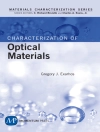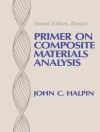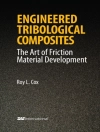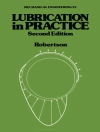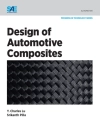Flexible-electronics is rapidly finding many main-stream applications where low-cost, ruggedness, light weight, unconventional form factors and ease of manufacturability are just some of the important advantages over their conventional rigid-substrate counterparts. Flexible Electronics: Materials and Applications surveys the materials systems and processes that are used to fabricate devices that can be employed in a wide variety of applications, including flexible flat-panel displays, medical image sensors, photovoltaics, and electronic paper. Materials discussed range from polymeric semiconductors to nanotube transparent conductors, highlighting the important characteristics of each system and their target applications. An overview of the performance benchmarks for the different materials is given in order to allow a direct comparison of these different technologies. Furthermore, the devices and processes most suitable for given applications in flexible electronics are identified.
Topics covered include:
- An overview and history of flexible electronics
- Novel materials for solution-processable thin-film electronic devices and their properties
- Low-temperature processing of conventional materials and devices on plastic foils
- Novel techniques, such as printing and roll-to-roll processing, for large-area flexible electronics manufacturing
- Materials and device physics relevant to flexible electronics
- Device integration on flexible substrates
- Mechanical and electronic characteristics for thin-film transistors and nano-scale transparent conductors on flexible platforms
- Applications towards flexible displays, sensors, actuators, solar energy, radio-frequency identification, and micro-electro-mechanical systems
Written by leading researchers in the field, Flexible Electronics: Materials and Applications serves as a reference for researchers, engineers, and students interested in the characteristics, capabilities, and limitations of these exciting materials and emerging applications.
Cuprins
Overview of Flexible Electronics Technology.- Mechanical Theory of the Film-on-Substrate-Foil Structure: Curvature and Overlay Alignment in Amorphous Silicon Thin-Film Devices Fabricated on Free-Standing Foil Substrates.- Low-temperature Amorphous and Nanocrystalline Silicon Materials and Thin-film Transistors.- Amorphous Silicon: Flexible Backplane and Display Application.- Flexible Transition Metal Oxide Electronics and Imprint Lithography.- Materials and Novel Patterning Methods for Flexible Electronics.- Sheet-Type Sensors and Actuators.- Organic and Polymeric TFTs for Flexible Displays and Circuits.- Semiconducting Polythiophenes for Field-Effect Transistor Devices in Flexible Electronics: Synthesis and Structure Property Relationships.- Solution Cast Films of Carbon Nanotubes for Transparent Conductors and Thin Film Transistors.- Physics and Materials Issues of Organic Photovoltaics.- Bulk Heterojunction Solar Cells for Large-Area PV Fabrication on Flexible Substrates.- Substrates and Thin-Film Barrier Technology for Flexible Electronics.
Despre autor
William Wong received his B.S. from the University of California, Los Angeles, in 1990, his M.S. from the University of California, San Diego, in 1995 and his Ph.D. from the University of California, Berkeley, in 1999. He was an associated research engineer for Siemens Solar Industries in Camarillo, CA, form 1990-1992. Since 2000, he has been a senior member of the research staff at the Palo Alto Research Center.
Alberto Salleo received his physics degree in 1994 from Ecole Polytechnique in France; his M.S. from the University of California, Berkeley in 1998; and his Ph.D. from the University of California, Berkeley, in 2001. He has held several positions such as visiting scholar and graduate student researcher and currently is a researcher in the Electronic Materials Laboratory at the Palo Alto Research Center. In January, 2006, he will become an Assistant Professor for the Department of Materials Science and Engineering at Stanford University.


